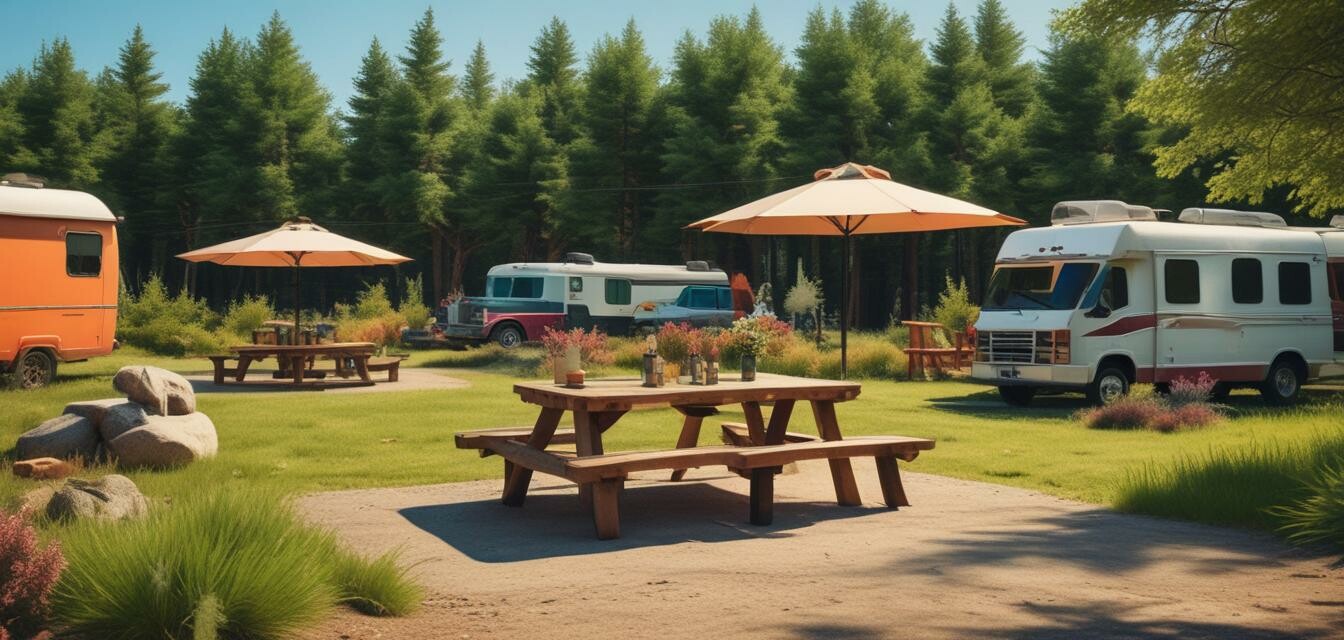
As an Amazon Associate, I earn from any qualifying purchases, at No Extra Cost to You.
How outdoor furniture is changing campground designs
Key Takeaways
- Outdoor furniture enhances functionality and comfort in campgrounds.
- It promotes social interaction and community among campers.
- New designs are influencing campground layout for better space utilization.
- Durability and sustainability are key considerations for outdoor furniture.
- The evolution of outdoor furniture is redefining the camping experience.
Camping is evolving, and one of the most noticeable changes in campground design is the incorporation of outdoor furniture. This shift isn't just about aesthetics; it's about enhancing the overall camping experience. As more campers seek comfort and community, campgrounds are having to adapt to these demands by integrating furniture that promotes relaxation and interaction.
The Rise of Outdoor Furniture in Campgrounds
Outdoor furniture is becoming a staple in campgrounds around the country. From picnic tables to lounge chairs, these additions are transforming how campers interact with their environment. Let’s dive into some of the key benefits that outdoor furniture brings to campground design:
| Benefits | Description |
|---|---|
| Comfort | Provides a relaxing space for visitors to unwind after a hike. |
| Social Interaction | Encourages group activities and bonding among campers. |
| Enhanced Aesthetics | Adds visual appeal to the natural beauty of the camping setting. |
| Functional Spaces | Creates designated areas for cooking, eating, and relaxing. |
How Outdoor Furniture is Redesigning Campground Layouts
Modern campground designs are shifting to incorporate more communal and functional spaces. Here are ways outdoor furniture is influencing campground layouts:
- Community Areas: Campgrounds are now featuring large picnic tables and gathering spots to foster interaction.
- Comfort Zones: Lounging areas with hammocks and chairs are becoming common, providing campers a place to relax.
- Dining Experiences: Equipped with outdoor kitchens, stylish seating boosts the dining experience outdoors.
- Eco-Friendly Designs: Durable and sustainable materials are favored in modern campground furniture.
New Materials and Sustainable Options
Sustainability is a crucial focus in the evolution of outdoor furniture. Campgrounds are increasingly choosing environmentally friendly furniture made from recyclable or sustainable materials. This not only benefits the environment but appeals to a growing demographic of eco-conscious campers.
Some popular materials include:
| Material | Benefits | Drawbacks |
|---|---|---|
| Wood | Natural appearance and sturdy | Requires maintenance and treatment against elements |
| Recycled Plastic | Durable and low-maintenance | Less aesthetic appeal compared to wood |
| Aluminum | Lightweight and rust-resistant | Can be prone to scratches and dents |
| Bamboo | Fast-growing and biodegradable | Less durable than traditional hardwoods |
Future Trends in Campground Design
As the demand for comfortable and functional camping experiences continues to rise, the future of campground design looks promising. Expect to see:
- Integration of Technology: Campgrounds may increasingly include Wi-Fi hotspots and charging stations integrated within furniture designs.
- Customization Options: Campers will have more choices in layout and types of furniture based on their preferences.
- Multi-Functional Furniture: Designs that serve various purposes will likely become popular, maximizing space and functionality.
- Sustainability Focus: Green furniture made from renewable resources will dominate designs, appealing to eco-conscious campers.
Conclusion
The introduction of outdoor furniture is not just a trend; it's a transformative change in campground design. As environments shift to prioritize comfort, community, and sustainability, camping experiences are set to improve for everyone involved. With various options available, campgrounds are crafting unique identities that enhance the joys of outdoor life.
For more insights into camping gear and experiences, check out our other articles on buying guides or explore the latest in backpacking trends.
Pros
- Enhances comfort for campers.
- Promotes social interactions and activities.
- Adds aesthetic value to campgrounds.
- Provides practical spaces for cooking and dining.
Cons
- Initial investment can be high.
- May require maintenance and care.
- Need to choose durable materials to withstand elements.
